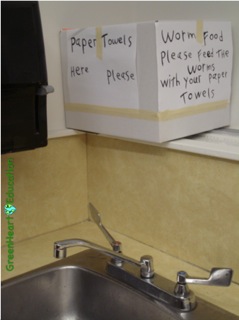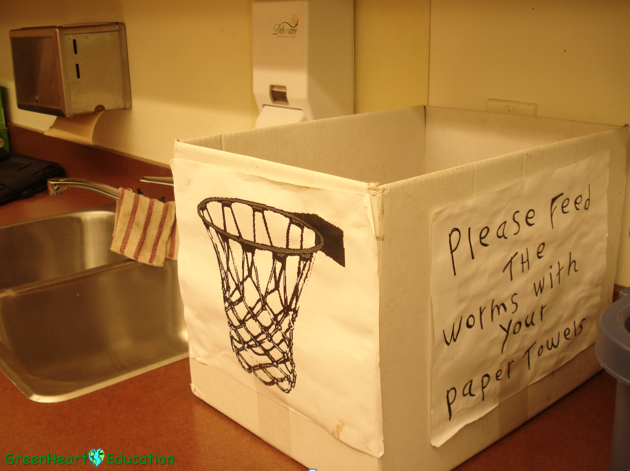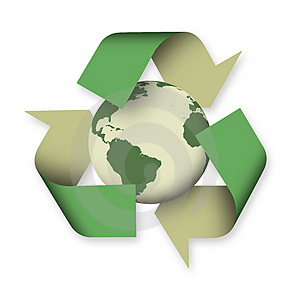Paperless Prof Day
Participating in Paperless Prof Day can help you and your students come up with creative ideas for teaching and learning that use less paper. Hold a regular Paperless Prof Day in your classroom and track how much paper your class saves.

Paper gets special treatment in [our initiative] because it is the recyclable material most prevalent on school campuses. We use paper for textbooks, notebooks, worksheets, scratch paper, art projects, library books, flyers to parents, internal communication, and for some, paper airplanes!
Paper on school campuses isn't going away; it's a valuable commodity and serves its purpose. Because paper is so important and valuable to the way we do business, it is critical to use it with respect, so that we can teach children how to manage paper consumption responsibly.
— Go Green Initiative
What is a "Paperless Prof Day"?
Paperless Prof Day is a fun way to learn about paper and paper conservation with your students, and a good way to kickstart and implement a paper reduction campaign.
Paper is so ubiquitous in schools and classrooms that we usually don't think twice about reaching for a sheet — or a ream — of it. But what happens when we try to not use as much paper? We ...
- use more hands-on/experiential and less paper-based teaching techniques
- focus on rethinking, reducing and reusing (rather than just recycling)
- have students write their drafts on scrap paper and make scratch pads for math calculations from paper in the recycle bin
- help train our colleagues on photocopier use so that back-to-back copying is easy and ingrained

- collect brown (unbleached recycled) paper towels in separate containers in our washrooms and at our sinks and use them as the "browns" (carbon) in our compost systems, instead of throwing them in the garbage
- wipe our washed hands on our pants, and use hankies (and perhaps make handkerchiefs as a fundraiser, with our school's logo silkscreened on the fabric) — toilet paper, well, let's not go there ;-)
- place the photocopier in an awkward place or inconvenient location to make teachers less likely to use it unthinking
- hold contests and competitions where each class or division measures its own paper waste and tries to get it down to zero
- find new uses for "used" paper, like shredding it for the classroom vermi (worm) composter to create soil
- use old-fashioned slates and chalk, or have students write their answers in the sand table with their fingers or outdoors in the dirt with a stick
- tell more stories, and go outside for more outdoor play and learning
- in a cold climate on snowy days, fill spray bottles with water and food colouring and then go outside to write in the snow (plan ahead to be sure you have enough spray/squirty bottles)
- make paper with students, and learn about the history of paper (trying to imagine life before paper and a life with no paper)
- use the Environmental Paper Network's Paper Calculator to discover statistics about the greenhouse gas emissions, number of trees cut, amount of waste, etc. we are responsible for based on the volume and type of paper we use


Why do paper choices matter?
By using less paper, increasing recycled content, and making other improvements, you can save wood, water and energy, and cut pollution and solid waste.
— Environmental Paper Network
Paperless Prof Day and Technology
There's more and more talk these days of "paper-free classrooms" but
I'm not sure that's ever going to be a reality. Nor would I want it to
become a reality, especially if it meant ever-increasing amounts of
plastic and metal technology in the classroom, where paper could end up
being the only connection students had with the rest of Nature. (You know, paper = trees = Nature.)
To
me, doing all my teaching using only "technology" would be no better
than using only paper. Young people need a range of different learning
experiences and modalities, and they shouldn't all be mediated by a two-dimensional
screen. I hope that any paper-free classrooms in the world are filled with living plants and garden boxes, at the very least.
Technology provides a set of tools, but it's not the only set, nor should it be the only set that students experience and are taught to value. Modern communication technologies are exciting, I'll admit it. But what are we getting our students to communicate? Using modern technologies for writing can be a boon, especially for students with dysgraphia. But the question still remains, what are we encouraging our students to write?
What I'm trying to say is that technology is not the teacher. We still need to be vigilant and professional in our use of technology in the classroom. If we want students to preserve something wonderful that they've written, for example, printing it on paper might be the better choice. Evan Angler said, "In an age of infinite digital documentation, paper was the last safe place for secrets."

Another variable in the "saving trees" argument is the fact that we need a continuous infusion of virgin fiber (new trees) in the paper supply. If you took a piece of virgin paper, and kept recycling it for reuse, you could only do that about nine times before the fibers would become too short to hold together in the form of a piece of paper. The truth is, unless our society becomes completely paperless, we cannot discontinue using trees for paper products through mere recycling. Still, if we must use paper, then we should buy recycled-content paper, and recycle all the paper we can.
— Planning Guide for School-Site Go Green Teams
Paperless Prof Day and Math Integration
Math fits perfectly with Paperless Prof Day. Students can work on all sorts of calculations, data management, statistics, graphing, measuring (length, height, distance). Here are some of the numbers your students can research.
- number of students per staff member
- paper used (sheets/reams per person, class, school, average)
- how many trees that equals
- monthly and yearly photocopy records (lowest and highest using teachers/classes)
- how much paper (by weight) goes to the landfill, to recycling, home with students as projects or newsletters
- what percentage of paper goes to the landfill versus to recycling versus home with students
- how much money can be saved (based on monthly and yearly purchasing records from the school secretary)
- daily incidence of good recyclable paper thrown in wastebasket versus contaminated (eg, wet, spilled on) paper
- percentage of recycled fibre in paper purchased
- percentage reductions in paper use over time
See an example of this kind of math, calculated for a school I used to work in, below.

Our school used approximately 50,000 sheets of 8.5 inches (8.5 cm) x 11 inches (28 cm) paper every week x 44 weeks = 2,200,000 sheets.
It used approximately 2,000 sheets of 11 inch (28 cm) x 17" (43 cm) paper every week x 44 weeks = 88,000 sheets.
This comes out to 2,280,000 sheets of paper per year, which works out to 1500 sheets of paper per person at our school. This is equivalent to 3 reams (500 sheets in a ream) per person. This is also equivalent to approximately 29 trees.* Remember that this number is extremely difficult to estimate, as trees come in all different shapes and sizes.
Let's do some math: 2,640,000/500 = 5280 reams of paper. Each ream of paper is 5 cm tall (about 2 inches). 5280 x 5 cm = 26,400 cm = 264 metres (866 feet). To put this into perspective, 264 m is almost half the height of Toronto's CN Tower, which is 553 m (1,814 feet) tall, one of the tallest structures in the world!
*On average, one tree can produce 90,000 sheets of paper.
— Stephanie Foster, Fostering Sustainability

Paperless Prof Day isn't going to save the world, but it will save your school money (which can then go towards all sorts of wonderful learning resources or experiences), and contribute to less deforestation — and an increased environmental awareness
in your students.
Head back to Greening School Behaviour
Return to GreenHeart Education Homepage